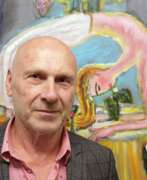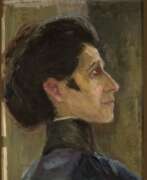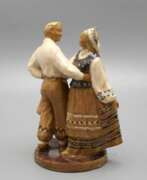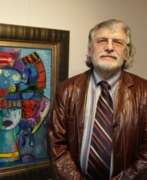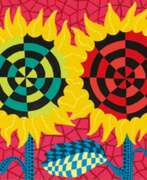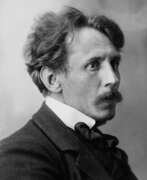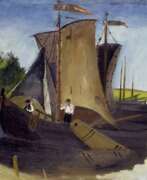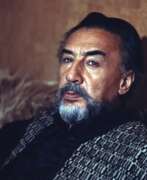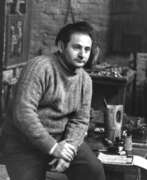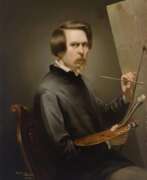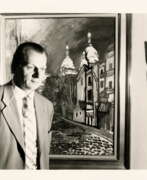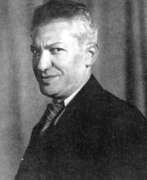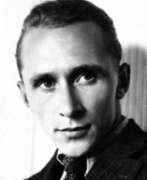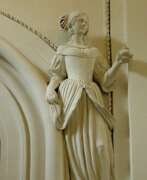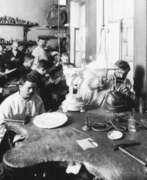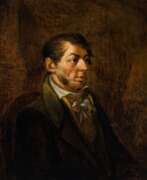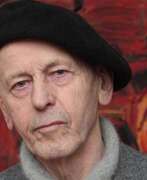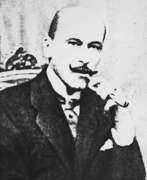Lithuania
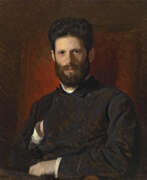

Mark Matveyevich Antokolsky (Russian: Марк Матве́евич Антоко́льский) was a 19th century Russian sculptor and writer. He is known as a representative of the realistic style and as the first sculptor of Jewish origin to gain international fame.
Mark Antokolsky devoted most of his career to the depiction in marble, plaster and bronze of the real characters of Russian history and achieved wide recognition already at a young age. His works were highly appreciated not only in Russia but also abroad and the artist was elected a member of many European academies of arts.
Mark Antokolsky was also a very successful writer. He often wrote publicistic articles on the development of the visual arts, and shortly before his death he published a novel describing real-life events in the life of the Jews in the Russian Empire.
Although from the early 1870s Mark Antokolsky spent most of his time living in France, he never lost touch with Russia - he constantly carried out orders for the royal family and the Russian Academy of Arts, wrote articles for Russian magazines, and regularly held solo exhibitions of his works in St. Petersburg.




Jonas Čeponis was a Lithuanian painter and representative of the Fauvism movement.
Čeponis graduated from the Lithuanian Art Institute and the Vilnius Institute of Engineering Construction, and was a professor at the Lithuanian Art Institute. Influenced by Fauvism, the artist mainly painted expressive landscapes of Lithuanian villages and Vilnius. His paintings are characterized by decorative, contrasting color combinations. Čeponis also painted portraits, still lifes, figurative compositions and nudes.
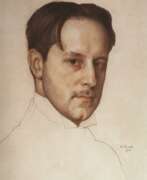

Mstislav Valerianovich Dobuzhinsky (Russian: Мстислав Валерианович Добужинский), a Russian Artist and Painter, stands as a towering figure in the world of fine arts. Born into the vibrant cultural tapestry of Russia, Dobuzhinsky specialized in painting and graphic art, leaving an indelible mark on the artistic landscape. Known for his meticulous attention to detail and a profound ability to capture the essence of urban and natural landscapes, his works resonate with art collectors and experts alike.
Dobuzhinsky was a key member of the Mir Iskusstva (World of Art) movement, which revolutionized Russian art at the turn of the 20th century. His work is celebrated for its unique blend of realism and symbolism, capturing the changing face of cities and the timeless beauty of the countryside with equal finesse. Notable for his cityscapes, Dobuzhinsky's art delves into the soul of urban environments, portraying their architecture and inhabitants with a deep sense of empathy and understanding.
His oeuvre is a testament to the rich cultural heritage of Russia, and his pieces are proudly displayed in prestigious museums and galleries worldwide. Collectors and art enthusiasts cherish Dobuzhinsky's works for their historical significance and artistic merit. His ability to convey the complexity of the human spirit and the beauty of the mundane makes his art a valuable asset for any collection.
For those captivated by the allure of Russian culture and the finesse of early 20th-century art, Mstislav Valerianovich Dobuzhinsky's creations offer a window into a world of exquisite beauty and profound emotion. We invite collectors and experts in art and antiques to stay abreast of new product sales and auction events featuring Dobuzhinsky's work. Sign up for updates today and ensure you never miss an opportunity to own a piece of Russian art history.
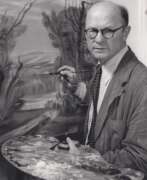

Adomas Galdikas was a Lithuanian painter, graphic artist, theatre artist and stage designer.
Adomas Galdikas painted landscapes, still lifes, portraits, abstract compositions. Author of prints, illustrated books. He created scenery for seventeen productions of the Kaunas State Theatre; among the most significant theatre works, apart from Kreve's Sharunas, is the opera Gražina by Jurgis Karnavičius (1933).
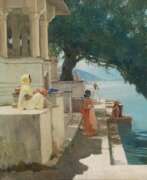



Tadeusz Groeski (Russian: Фаддей Антонович Горецкий) was a mid-nineteenth-century Russian and Polish artist. He is known as a painter and teacher.
Tadeusz Groeski created a number of historical and genre paintings, as well as portraits of Russian intellectuals, soldiers, Polish church figures, family members and friends. He also made skilful copies of paintings by famous Italian and Spanish masters. His artistic legacy also includes drawings-illustrations for classics of Polish literature.
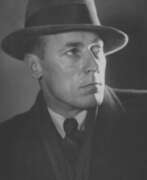

Jazep Mikhailovich Gorid (Russian: Язеп Михайлович Горид) was a Belarusian and Polish-Lithuanian artist of the first half of the twentieth century. He is known as a graphic artist and painter, caricaturist and illustrator.
Jazep Gorid drew political and everyday caricatures, painted portraits and landscapes. He also worked in book graphics, illustrated and designed books and other printed publications. In addition, the artist created stained-glass windows and murals.
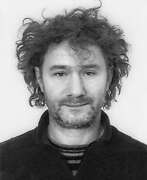

Kęstutis Grigaliūnas - Lithuanian graphic artist, art teacher. 1988-1989 created linen carvings, wood carvings, screen prints, etchings, illustrated books. Since 1990 one of the first Lithuanian graphic designers to use the color screen printing technique. Made a cut out of cardboard and plywood. It is characterized by a pronounced graphic beginning - lines, signs, ornaments, figurative and abstract motifs are used. Since 1998 creates more complex plastic graphic works and cut-outs, they feature postmodernism features, pop art, Fluxus elements, decorative, eclectic images. A playful mood, irony, and various intellectual references to the images of Lithuania and other cultures and civilizations prevail.
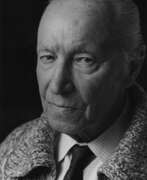

Antanas Gudaitis (Russian: Антанас Мартино Гудайтис), a Lithuanian painter born on July 29, 1904, in Šiauliai, and passing away on April 20, 1989, in Vilnius, was a pivotal figure in Lithuanian art, particularly noted for his contributions to modern expressionist and colorist painting. His studies spanned from the teacher's seminar in Šiauliai to literature at the University of Lithuania, and art at the Kaunas School of Art. Gudaitis further honed his skills in Paris at the National School of Decorative Arts and various private studios until 1933. His career as an educator included positions at the Vilnius Art School, Vilnius Art Academy, and the Vilnius Art Institute, where he was bestowed the title of professor in 1947. Gudaitis's recognition in the Lithuanian art scene was marked by honors such as the title of Meritorious Artist of the LSSR in 1961 and the laureate of the LSSR State Prize in 1965.
His body of work spans portraits, still lifes, and landscapes, showcasing a distinctive style that evolved from decorative and semi-abstract forms to more relief-rich and vibrant color palettes. Gudaitis's art reflects a deep engagement with Lithuanian moods and themes, often weaving intricate metaphors about contemporary life and human relationships. He was instrumental in the establishment of the Lithuanian modernist artist group "Ars" and remained an active member of the Lithuanian Artists' Union from 1935. His impact extended beyond his art, as he nurtured and influenced generations of students, imbuing them with a sense of creativity and resilience.
Antanas Gudaitis is celebrated for bringing avant-garde elements into the Lithuanian art scene and is recognized for his lyrical expressionism. His legacy is underscored by his ability to embody and impart the fundamental tenets of twentieth-century art—freedom, modernity, and national identity—despite the challenging socio-political landscapes of his time. Gudaitis's influence was profound, not just in his artworks, but in his dynamic role as a cultural figure, educator, and free spirit who endured dramatic circumstances without succumbing to them.
For art collectors and experts, Gudaitis's works offer a profound connection to the evolution of Lithuanian modern art, presenting opportunities to explore the rich textures, colors, and symbolic content that define his oeuvre. To stay updated on new product sales and auction events related to Antanas Gudaitis, signing up for updates is highly recommended, promising a gateway to the rich legacy and continued appreciation of his contributions to the art world.


Martinas Jankus is a Lithuanian landscape painter, member of the Lithuanian Union of Artists.
He began exhibiting in 1991 and since then has held 16 solo exhibitions. Jankus paints abstract, emotional landscapes, where the main thing is not the peculiarities of relief, but the skill to capture the unique color relationships depending on the seasons.
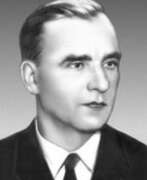

Vytautas Jurkūnas (Russian: Витаутас Юркунас) was a Lithuanian graphic artist, celebrated for his distinctive approach to printmaking and book illustration. Born in 1910 in Vindeikiai, he carved out a significant presence in the Lithuanian art scene from the interwar period through to the late 20th century, until his death in 1993 in Vilnius. Jurkūnas' education at the Kaunas School of Art laid the groundwork for a career that spanned teaching at the Vilnius Art Institute, where he influenced generations of artists, and exploring a wide array of graphic techniques, notably in linocut and wood engraving.
His early works, such as "Mother with Child" (1935) and the "Fishermen" series (1937-1939), showcase a unique style characterized by expressive lines, dynamic strokes, and a blend of realism with abstraction. During WWII, Jurkūnas produced compelling compositions reflecting the brutality of war, which added depth to his portfolio of socially and politically charged themes. Post-war, he gained renown for his book illustrations, employing linocut and wood engraving techniques to create images that resonated deeply with the textual narratives they accompanied. Notably, his illustrations for Kristijonas Donelaitis' "The Seasons" received significant acclaim.
Jurkūnas' contributions to Lithuanian graphic art are preserved in the collections of the National M. K. Čiurlionis Art Museum, the Lithuanian National Museum, and internationally, showcasing his enduring legacy. His work received the LSSR State Prize in 1957, marking a high point in his career and affirming his status as a pivotal figure in Lithuanian art.
For collectors and experts in art and antiques, Vytautas Jurkūnas' oeuvre offers a compelling study in the evolution of Lithuanian graphic art, with works that reflect the socio-political landscape of his time and his mastery of graphic techniques. To stay updated on exhibitions and auctions featuring Vytautas Jurkūnas' works, sign up for updates. These subscriptions provide insights into new sales and events dedicated to his legacy, offering a unique opportunity to engage with the rich history of Lithuanian art.


Isaac Ilyich Levitan (Russian: Исаак Ильич Левитан) was a distinguished Russian artist, celebrated for his profound contributions to the world of landscape painting. Born in 1860, Levitan's work is emblematic of the Russian landscape genre, capturing the emotive and atmospheric essence of the country's natural scenery. His artistry is not merely a depiction of the physical landscape but an exploration of the human emotion intertwined with the natural world, making his work resonate deeply with art collectors and experts alike.
Levitan's ability to infuse his landscapes with mood and emotion set him apart from his contemporaries. His paintings such as "The Vladimirka Road," "Above Eternal Peace," and "Golden Autumn" are lauded for their technical brilliance and emotive power. These works are showcased in prestigious museums, including the Tretyakov Gallery in Moscow, highlighting his importance in Russian culture and art history. Levitan's mastery in capturing the subtle transitions of light and his delicate portrayal of the seasons convey a profound sense of place and time, offering viewers a transcendent experience.
As an artist, Levitan's influence extends beyond his canvases, contributing significantly to the development of Russian landscape painting. His work embodies a unique blend of realism and impressionism, reflecting a deep connection to the Russian countryside. For collectors and experts in art and antiques, Levitan's paintings represent not only aesthetic beauty but also a rich cultural heritage. His legacy continues to inspire and captivate audiences, underscoring his status as a pivotal figure in the art world.
For those passionate about the intricacies of culture, art, and the storied canvas of history, Isaac Ilyich Levitan's oeuvre offers an unparalleled exploration of the Russian soul through landscape. We invite collectors and art enthusiasts to sign up for updates on new product sales and auction events related to Levitan's work. This subscription is your gateway to owning a piece of Russian artistic heritage, where the beauty of Levitan's landscapes can become a cherished part of your collection.
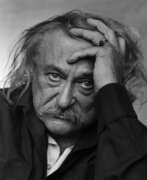

Jacques Lipchitz was a Cubist sculptor. Lipchitz retained highly figurative and legible components in his work leading up to 1915-16, after which naturalist and descriptive elements were muted, dominated by a synthetic style of Crystal Cubism. In 1920 Lipchitz held his first solo exhibition, at Léonce Rosenberg's Galerie L'Effort Moderne in Paris. Fleeing the Nazis he moved to the US and settled in New York City and eventually Hastings-on-Hudson.


Vasily Vasilyevich Mate (Russian: Василий Васильевич Матэ), birth name Wilhelm Johann Mathé, was a prominent Russian artist and engraver, made a significant mark in the art world during the late 19th century. Unlike many of his contemporaries who focused on poetry and painting, Vasily Mate specialized in the art of engraving, establishing himself as one of Russia's leading engravers.
Vasily Mate honed his skills at the Imperial Academy of Arts, where he later became a full member. His expertise in engraving set him apart in an era where Russian art was predominantly influenced by poetry and painting. Mate's collaboration with eminent Russian painters allowed him to produce engravings that captured the essence of their paintings, thereby playing a crucial role in popularizing Russian art.
Vasily Mate's engravings encompassed a range of subjects, including portraits of notable figures like Alexander Pushkin and Nikolai Gogol. His ability to intricately transcribe these subjects onto metal plates garnered admiration and respect, securing his legacy in the annals of Russian art history.
For art collectors and enthusiasts, Vasily Mate's works offer a glimpse into the rich cultural heritage of Russia. His engravings are not just artistic creations but historical artifacts that provide insight into the artistic endeavors of the late 19th century.
If you are keen on exploring more about Vasily Vasilyevich Mate and staying updated on sales and auction events related to his works, we invite you to sign up for our updates. This subscription will serve as your gateway to the fascinating world of Vasily Mate's engravings, ensuring you don't miss out on any opportunity to own a piece of Russian art history.
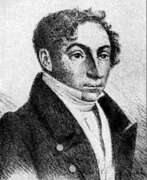

Józef Oleszkiewicz, a Polish-Lithuanian painter, was renowned for his contributions across Belarusian and Russian art scenes. Born in the late 18th century, Oleszkiewicz was celebrated for his masterful portraits and historical scenes, which were imbued with a distinctive blend of cultural influences that reflected his diverse heritage.
Oleszkiewicz's work is characterized by its meticulous detail and vibrant color palette, which set him apart from his contemporaries. His ability to capture the emotional depth and personality of his subjects made his portraits particularly revered. Among his notable works is the portrait of Adam Mickiewicz, a legendary figure in Polish literature, which is housed in the National Museum in Warsaw.
His career spanned various regions, leaving a significant mark on the art communities in Belarus and Russia as well. His influence is evident in the way he seamlessly integrated the artistic traditions of these cultures, making his works highly valuable not only for their aesthetic appeal but also for their cultural significance.
For collectors and experts in art and antiques, the work of Józef Oleszkiewicz offers a unique glimpse into the historical and cultural tapestry of Eastern Europe. His paintings are not just artistic expressions but are also historical documents that provide insight into the era's societal values and aesthetics.
To stay updated on exhibitions and auction events featuring works by Józef Oleszkiewicz, sign up for our newsletter. Ensure you never miss an opportunity to view or own a piece of this illustrious artist's legacy.
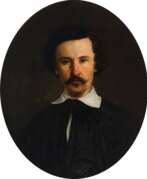

Edward Pawłowicz was a Polish-Lithuanian-Belarusian artist of the second half of the nineteenth and early twentieth centuries. He is known as a painter and graphic artist, public figure, memoirist and educator.
As an artist, Edward Pawłowicz painted portraits and landscapes in a style that critics define as transitional from classicism to romanticism. He also wrote several books of memoirs.


Yehuda Pen (Russian: Юдель Моисеевич Пэн) was a Jewish-Belarusian artist-painter and teacher, recognized for his pivotal role in the Jewish Renaissance in Russian and Belarusian art at the start of the 20th century. Born on May 24, 1854, in Novoalexandrovsk (now Zarasai, Lithuania), Pen emerged as a significant figure, arguably paralleling Mark Antokolski's impact in sculpture. After moving to Vitebsk in 1891, Pen established the first Jewish art school in Belarus, offering training to many, including Marc Chagall, Ossip Zadkine, and El Lissitzky, who could not afford or gain admission to larger academies.
Pen's life was tragically cut short when he was murdered at his home in Vitebsk on the night of February 28/March 1, 1937, under unclear circumstances. His legacy, however, lives on through his works, primarily housed in Belarusian museums, including the Vitebsk Museum of Modern Art and the Belarusian National Arts Museum. Notable works include "Letter from America" (1903), "Old Tailor" (1910), and "Self-portrait with Muse and Death" (1925), showcasing his mastery in portraying everyday life and Jewish cultural themes.
Art collectors and enthusiasts keen on exploring the depths of Jewish art's evolution in the early 20th century would find Pen's work both intriguing and enriching. To stay updated on exhibitions and sales featuring Yehuda Pen's art, signing up for updates is highly recommended. This subscription will alert subscribers to new product sales and auction events related to Yehuda Pen, ensuring they don't miss out on owning a piece of history.
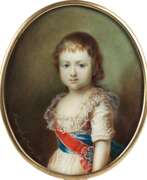

Aloys-Gustav Rockstuhl (Russian: Алоизий Петрович Рокштуль) was a mid-nineteenth-century Russian artist of Baltic-German origin. He is known as a hereditary miniaturist painter, portrait painter, draftsman, and lithographer.
Aloys-Gustav Rockstuhl had the title of court painter. Almost all of his work consisted of creating miniatures for the Imperial couple - Russian and foreign. The artist painted many portraits of Russian emperors and members of the imperial family.
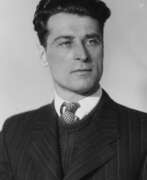

Yakov Dorofeyevich Romas (Russian: Яков Дорофеевич Ромас) was a Russian artist renowned for his contributions to painting and decoration. Born in 1902 near Grodno, Romas had a rich educational background, having studied at the Prechistenka Technical Institute and the Artistic and Theatric Institute in Moscow. His education under notable artists like N.P. Krymov and P.P. Konchalovsky significantly influenced his artistic development. Romas was not only a participant in exhibitions since 1933 but also played a key role in the decoration of the Krasnoselskaya station of the Moscow subway. Beyond his contributions to public and architectural art, he served as a senior artist of the All-Union Agricultural Exhibition and tutored at the Surikov Moscow State Institute of Arts until his death in 1969 in Astrakhan.
Romas's life and work were deeply intertwined with the historical events of his time. He spent a significant portion of the WWII blockade on a cruiser, demonstrating remarkable bravery and skill. Notably, he trained about 150 Red Navy men and executed combat missions, earning him the Order of the Patriotic War of the II degree, the Order of the Red Star, and the medal “For the Defense of Leningrad”. His painting, “Winter Volleys of the Baltic,” created during this period, is celebrated for capturing the essence of the fleet's role in the war and stands as a testament to his artistic mastery and personal heroism.
Romas's works have been auctioned multiple times, fetching various prices and reflecting his enduring legacy in the art world. His piece titled “Northern Caspien” was auctioned for 2300 USD in 2006, indicating the continued interest and value of his work in the art market. His paintings are cherished not only for their historical significance but also for their artistic value, making them sought after by collectors and enthusiasts alike.
For those interested in exploring the profound work and legacy of Yakov Dorofeyevich Romas, signing up for updates is invaluable. By subscribing, you will receive alerts on new product sales and auction events related to Romas's artwork, ensuring you remain informed about opportunities to engage with and appreciate the contributions of this remarkable artist to Russian art and culture.


Ignotas Mauricijus Ščedrauskas (Russian: Игнатий Степанович Щедровский) was a mid-nineteenth-century Russian artist of Polish-Lithuanian origin. He is known as a painter, draughtsman, and lithographer.
Ignotas Ščedrauskas is considered an outstanding genre painter of the natural school, close to the Venetsianov school. He worked mainly in lithography and also painted genre pictures from the life of Russian people, mainly craftsmen. In his works of this genre the artist sought to reliably convey scenes of urban life and social characteristics of urban types. The master also created landscapes, mostly of the Vilna region of Lithuania.
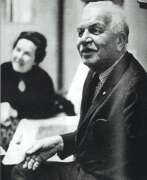

Benjamin Shahn, also known as Ben (Ben / Benjamin Shahn) — Lithuanian-born American artist and photographer. He combined a decorative style of imagery with poignant social themes in his works and is considered one of the most prominent critical artists in the United States. His photographs made him famous as a chronicler of life in New York's working-class and black Southern American communities, as well as the slums of big cities. Many of his street photographs were later used in his paintings and wall panels. He also used newspaper photographs in his work.
Shan's work can be found in many US museums, including the Wichita Museum of Art.


Wincenty Sleńdziński (Russian: Викентий Александрович Слендзинский) was a Polish-Lithuanian and Russian painter of the second half of the 19th and early 20th centuries. He is known as a painter and pianist.
Wincenty Sleńdzinski created portraits, landscapes and genre paintings. A special place in his work was occupied by the religious genre, the artist painted churches in Moscow and Lithuania.
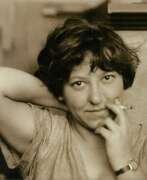

Varvara Fyodorovna Stepanova (Russian: Варва́ра Фёдоровна Степа́нова) was a Russian artist, a key figure in the avant-garde movement, particularly within the Constructivist branch that emerged in post-revolutionary Russia. Her work spans across various domains, including painting, graphic design, textile design, and theatrical set design. Stepanova's marriage and collaboration with fellow artist Aleksandr Rodchenko played a significant role in their creative exploration, where they together embarked on endeavors that significantly influenced the constructivist and avant-garde scenes.
Stepanova's contribution to the world of art and design was profound, especially in clothing and textile design, where she innovated with her approaches to "prodezodezhda" (production clothing) and "sportodezhda" (sports clothing), integrating geometric forms and functionality over aesthetic decoration. Her designs were not just artistic statements but were deeply embedded with practicality and efficiency, aiming to serve the new socialist society of the Soviet Union. Despite facing economic restrictions that limited the mass production of her designs, Stepanova's work in the clothing industry, particularly through her theatrical costumes, showcased her unique ability to blend art with functionality, emphasizing movements and creating garments that transformed the body into dynamic compositions.
In the realm of graphic design and propaganda, Stepanova's work alongside the early Soviet campaigns to promote literacy and her contribution to the magazine "LEF" illustrate her commitment to serving societal development through art. She utilized her skills in typography and book design to support educational and revolutionary propaganda, further highlighting her multifaceted talent and her dedication to the constructivist ideals.
Stepanova's textile designs, characterized by their bold graphic designs and innovative approach to fabric production, were another area where her artistic genius shone. Working at the First State Textile Factory and as a professor of textile design, she created over 150 fabric designs that featured geometric shapes and a limited color palette, showcasing her ability to generate dynamic, multi-dimensional designs despite technological and material limitations.
Her involvement in Constructivism was marked by a clear departure from the idea of art as a spiritual activity, towards a focus on serving the revolutionary development of society. Stepanova, along with Rodchenko and others, formed the first Working Group of Constructivists, advocating for art that was directly useful for society, leading her to design clothing that rejected class and gender distinctions in favor of functional, utilitarian aesthetics.
One of Stepanova's notable contributions was to the field of photomontage, particularly through her work "The Results of the First Five-Year Plan," which utilized this technique to promote Soviet achievements. This work exemplifies how she applied constructivist principles to serve the ideals of the Soviet Union, blending art with political propaganda in a manner that was visually striking and ideologically aligned with the goals of the newly established USSR.
For collectors and experts in art and antiques, Stepanova's work remains a fascinating exploration of how avant-garde principles can be applied across different mediums and for various societal needs. Her legacy in the constructivist movement and her contributions to the avant-garde are celebrated in collections and exhibitions around the world.
To stay updated on new product sales and auction events related to Varvara Fyodorovna Stepanova, sign up for updates. This subscription ensures you remain informed about opportunities to acquire pieces linked to this pivotal figure in Russian avant-garde art.
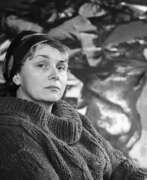

Sofija Veiveryte (Russian: София Мотиевна Вейверите) was a Lithuanian and Soviet artist of the second half of the twentieth and early twenty-first centuries. She is known as a painter, graphic artist, master of frescoes, and teacher.
Sofija Veiveryte created works characterized by monumentality, expressiveness, ability to work with tones and halftones. Her portraits show the influence of the old Renaissance and Baroque masters. Her works are kept in various museums, including the Tretyakov Gallery, the Pushkin Museum of Fine Arts, the Sofia National Gallery (Bulgaria) and the Lithuanian Museum of Theater, Music and Cinema, as well as in private collections.
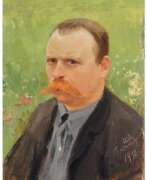

Ivan Alexeyevich Vladimirov (Russian: Иван Алексеевич Владимиров) was a Russian painter and graphic artist, known for his vivid and often stark depictions of the Russian Revolution and its aftermath. Born on January 10, 1870, in Vilnius, Vladimirov became a prominent war artist, documenting the turbulent events of early 20th-century Russia through his art.
Vladimirov's artistic journey began with formal studies at the Vilna Drawing School and later at the St. Petersburg Academy of Arts. His early works focused on battle scenes and everyday life, showcasing his realistic style and attention to detail. During the Russo-Japanese War and World War I, he served as an artist-correspondent, capturing the brutal realities of war.
His most notable works were created during and after the Russian Revolution. Paintings like "On the Streets of Petrograd" and "Hungry Times in Petrograd" portray the harsh conditions and social upheaval of the era. Vladimirov's art provides a critical lens on the revolution, illustrating both the triumphs and tragedies of the period. His works are housed in various collections, including the Williamson Art Gallery & Museum.
To stay updated on new exhibitions and auction events related to Ivan Alexeyevich Vladimirov, sign up for our newsletter. You'll receive timely alerts on new product sales and special events related to this influential artist.
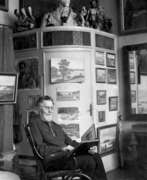

Antanas Žmuidzinavičius was a Lithuanian painter and art collector, celebrated for his significant contributions to Lithuanian art and culture. Educated at the Veiveriai Teachers' Seminary, he initially worked as a teacher while advancing his art education in Warsaw. Žmuidzinavičius's passion for art led him to Paris, where he studied at prestigious institutions such as the Académie Colarossi, enhancing his painting and drawing skills.
During World War I and the interwar period, Žmuidzinavičius played an instrumental role in safeguarding Lithuanian art and culture. He was a pivotal figure in organizing art exhibitions, and he dedicated considerable efforts to the collection and preservation of artworks amid political turmoil. His commitment to art extended beyond creation; he was deeply involved in education, teaching drawing at the Kaunas Art School and influencing generations of artists.
One of Žmuidzinavičius's most enduring legacies is the Devils Museum in Kaunas, a unique institution dedicated to sculptures and carvings of devils from around the world. The museum, which started with Žmuidzinavičius's collection, has grown to house over 3,000 items, reflecting a wide range of cultural perspectives on the devil. This museum not only showcases Žmuidzinavičius's fascination with folklore and mythology but also serves as a testament to his broad interests and contributions to Lithuanian heritage.
Antanas Žmuidzinavičius's work and his Devils Museum continue to captivate visitors, offering insights into Lithuanian culture, history, and art. For those intrigued by his life, contributions, and the unique devil collection, the Devils Museum in Kaunas is a must-visit, embodying the spirit of one of Lithuania's most notable artists.
For collectors and experts in art and antiques, the legacy of Antanas Žmuidzinavičius provides a fascinating glimpse into the rich cultural tapestry of Lithuania. Sign up for updates to stay informed on new product sales and auction events related to the incredible work of Antanas Žmuidzinavičius and to explore the depth of Lithuanian art and history further.


William Zorach, born Zorach Gorfinkel, was a Jewish American sculptor, painter, printmaker, and educator.
Zorach's family emigrated from Lithuania to the United States when he was four years old. He trained as a lithographer and studied painting at the Cleveland Institute of Art and in Paris, where he painted in bright colors in the manner of Henri Matisse and other artists of the Fauvism movement. Returning to the United States in 1912, Zorach became one of the first to introduce European modernist movements to the country. And later began to work extensively with sculpture.
William Zorach was a pioneer in the art of direct carving and is unique in that he often used very hard, colored and patterned stones like granite boulders he found while walking. Zorach's mature works are characterized by monumental forms and skillful use of the natural color, veining and texture of stone and wood. He often left traces of the sculptor's tools to enrich the surface.
Zorach was one of the best known and most respected sculptors of his generation. He was elected a member of the American Academy of Arts and Letters and taught at the Art Students League of New York.
